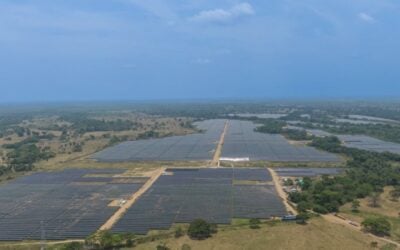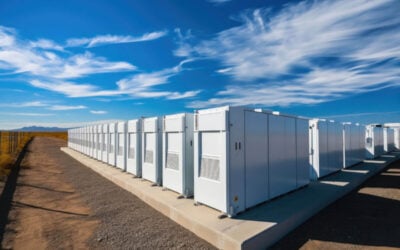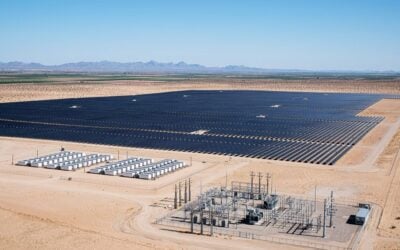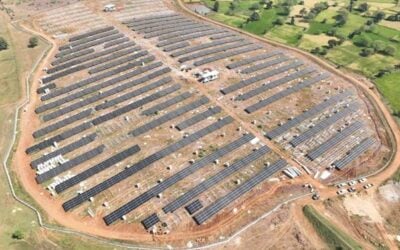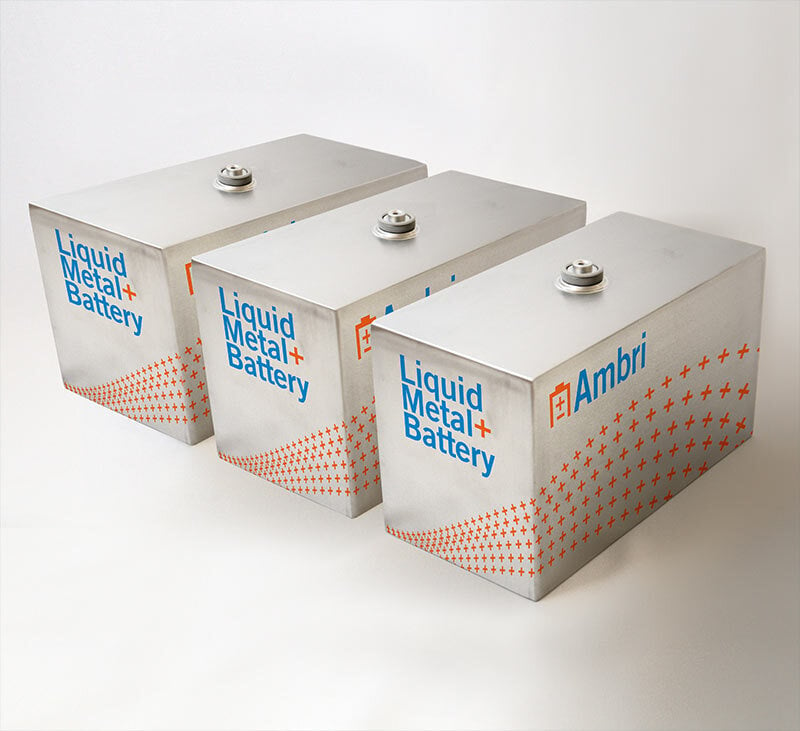
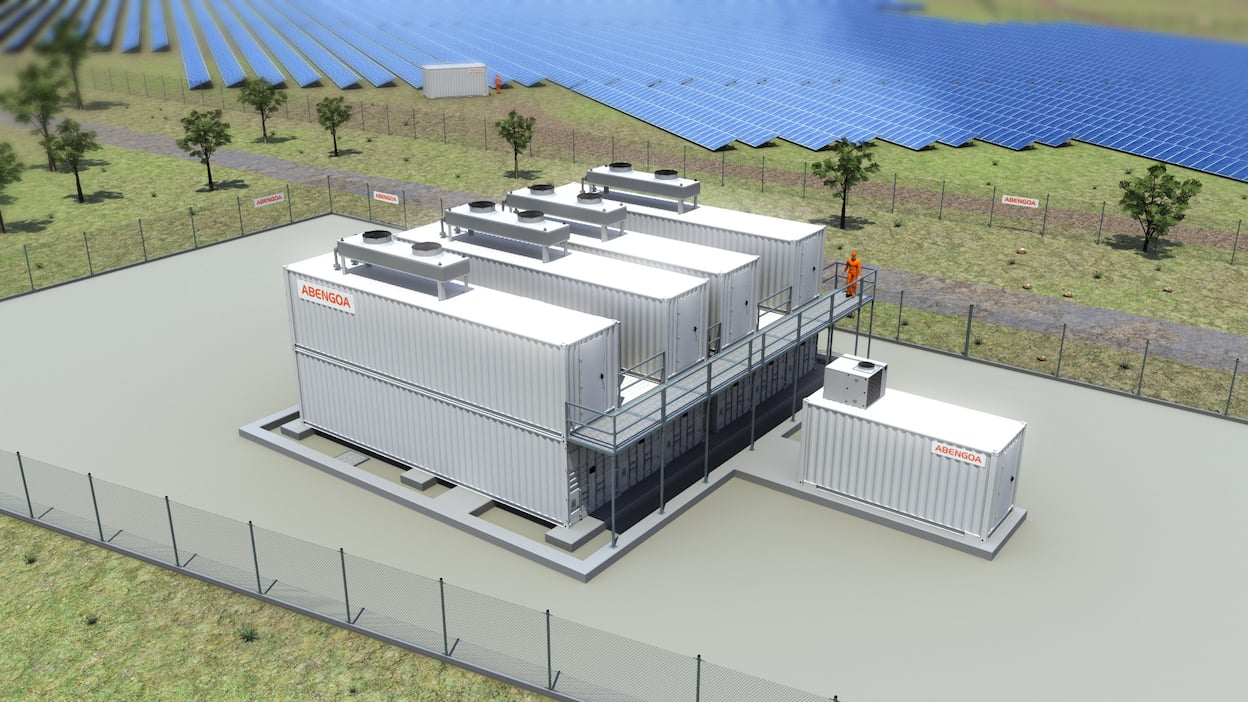
US startup Ambri has received a customer order in South Africa for a 300MW/1,400MWh energy storage system based on its proprietary liquid metal battery technology.
The company touts its battery as being low-cost, durable and safe as well as suitable for large-scale and long-duration energy storage applications.
Enjoy 12 months of exclusive analysis
- Regular insight and analysis of the industry’s biggest developments
- In-depth interviews with the industry’s leading figures
- Annual digital subscription to the PV Tech Power journal
- Discounts on Solar Media’s portfolio of events, in-person and virtual
Ambri has signed the deal with South African renewable energy power producer and retailer, Earth & Wind to deploy the tech at a combined wind and solar PV generation plant in the country’s Eastern Cape region.
Earth & Wind is yet to begin generating and selling power – the company is developing a large portfolio of wind, solar, hydropower and biomass, with partnership deals and land agreements in place over five provinces in South Africa for more than 15GW of power.
Of that pipeline 2GW of wind and solar has passed the environmental approval stage and the company is preparing to break ground on its first 19MW solar plant this year.
The grid in South Africa suffers frequent outages and network operator Eskom carries out load shedding events regularly to try and manage the system.
Solutions to the issues have included targeted procurements of dispatchable energy, including a large Eskom tender in which solar-plus-storage projects were eligible and won – alongside gas power plants.
This need, coupled with the nation’s climate and renewable energy policy goals will be continuing drivers for energy storage technologies, Ambri said of the customer’s order.
Ambri’s battery cells use liquid calcium alloy anodes with a molten salt electrolyte and solid antimony particles in the cathodes. These are arranged into stainless steel containers and integrated as DC-coupled containerised battery energy storage systems (BESS).
While the batteries operate at a temperature of 500°C, they are safe to operate and are not subject to some of the same safety or technical issues with lithium-ion batteries that can be caused by thermal runaway, electrolyte decomposition and off-gassing, the company claims.
This week, on 21 June, Ambri’s founder and now chief scientific advisor Prof Donald Sadoway won a European Inventor Award for his work on the batteries. The company was spun out of lab work from MIT, where Sadoway is still a professor of materials chemistry at its Department of Materials Science and Engineering.
Sadoway won in an international category at the awards, hosted by the European Patent Office.
“When I look at all the patented technologies that are represented at this event I see an abundance of excellence, all of them solutions to pressing problems. I wonder if the judges are assessing not only degrees of excellence but degrees of urgency,” Sadoway said on accepting the award.
“The liquid metal battery addresses an existential threat to the health of our atmosphere which is related to climate change.”
Founded in 2010, Ambri’s commercialisation activities have gathered pace in the last couple of years. Last year it secured US$144 million in a Series A funding round, at the same time securing a long-term supply deal for the antimony used in its cathode.
Earlier this month, Energy-Storage.news reported that the company will be tripling the footprint of its manufacturing facility in Massachusetts as well as adding an innovation centre to the complex. Ambri said yesterday it will begin shipping batteries to the Earth & Wire project in 2024 and anticipates commissioning of the project in 2026.
South Africa vanadium producer Bushveld could put 180MWh of storage at its own facilities
In related news, vanadium producer Bushveld Minerals has secured financing for a hybrid mini-grid project at its mine in the North West province of South Africa.
The project, at Bushveld’s Vametco Alloy mine, will pair 3.5MW of solar PV with a 1MW/4MWh vanadium redox flow battery (VRFB) system.
It will meet around 10.7% of the mine’s energy needs as well as serving as a demonstration and trial of the technology’s suitability for mining applications.
In late 2020, it was announced that Spain’s Abengoa had been appointed for EPC duties. However, Abengoa is now not associated with the project, a source close to the matter told Energy-Storage.news.
The flow battery system will be provided by CellCube, a manufacturer in which Bushveld owns a 25.25% stake and vanadium for use in the electrolyte is already being taken from the Vametco facility.
Regular readers of this site and our journal PV Tech Power will know that Bushveld is targeting a high level of vertical integration within the VRFB industry: in addition to investing in manufacturers, the company is building an electrolyte processing plant and has launched a subsidiary, Bushveld Energy, which is actively advancing VRFB projects including the Vametco hybrid mini-grid project.
It’s expected to cost about ZAR113 million (US$7.1 million) and Bushveld Energy has provided 40% of the equity, alongside South African investment firm NESA Investment Holdings, which put in the other 60%. Bushveld and NESA have formed a special purpose vehicle (SPV) company for it.
Banking group ABSA has also approved a ZAR64 million loan towards construction. A 25-year power purchase agreement (PPA) is in place.
Bushveld Energy noted that it will log ZAR5.6 million in its own revenues from the project, while its parent company’s mining and processing facilities could potentially host a total 120MW of solar and 180MWh of battery storage.
“This VRFB mini-grid project is a useful proof-of-concept of the greater technological qualities of long-duration VRFB systems when used in conjunction with renewable energy,” Bushveld Minerals Group CEO Fortune Mojapelo said.
“At a fundamental level the project also perfectly demonstrates the sustainable uses for vanadium and positions it as a key metal in the green energy transition.”
Preparation of the site for the mini-grid’s construction began in the first quarter of this year and with the project now full funded, it is expected to be completed during the first half of next year.

